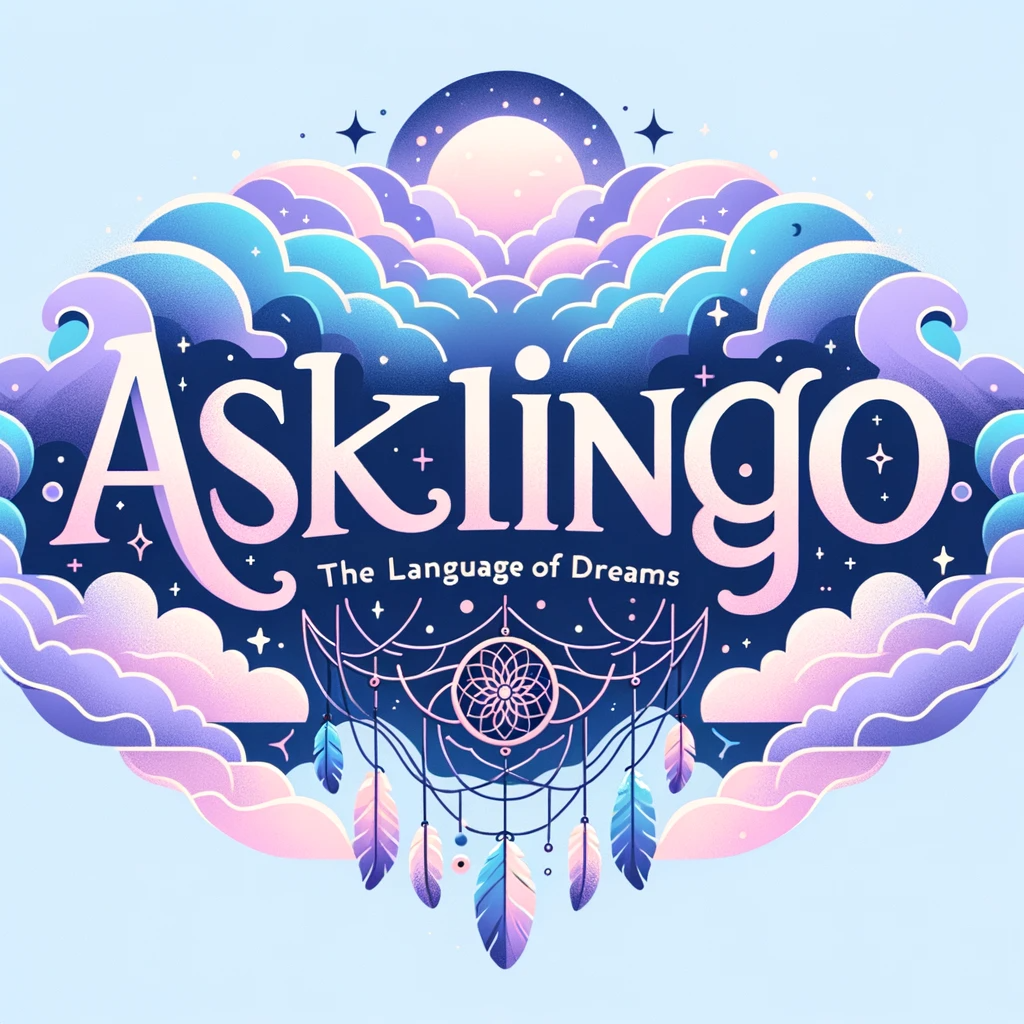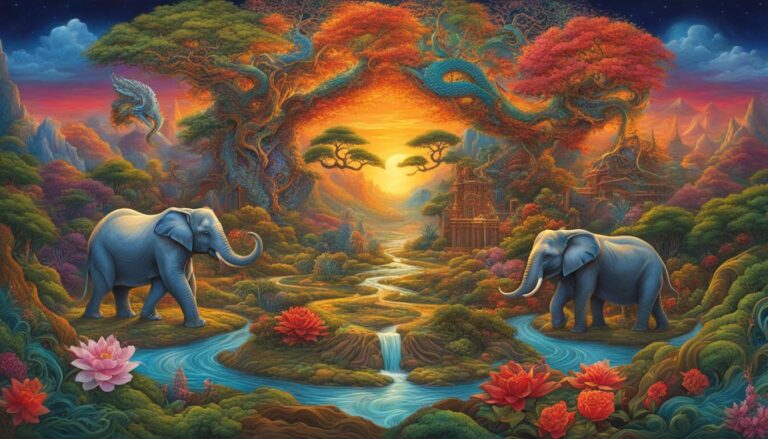Understanding the Changing Interpretations of Dreams
Dreams have been a subject of fascination and intrigue for centuries. The interpretation of dreams, also known as dream symbolism, has evolved over time, influenced by cultural trends, scientific advancements, and individual experiences. In this article, we will delve into the fascinating world of dream symbolism evolution, exploring how the interpretation of dream symbols has shifted and transformed over the years. We will examine different perspectives, theories, and approaches to understanding dreams, shedding light on the ever-evolving language of dreams.
Key Takeaways:
- Dream interpretation has evolved over time through cultural and scientific influences.
- Various perspectives, theories, and approaches have shaped the understanding of dream symbolism.
- Dreams are a rich source of insights into the human mind and can provide personal growth and self-understanding.
- Common dream themes carry symbolic meanings that can offer valuable insights into one’s emotions, desires, and fears.
- Modern approaches to dream interpretation highlight the active participation of the dreamer in analyzing their dreams.
The Evolution of Dream Interpretation throughout History

In ancient times, dreams were believed to hold immense significance and were often seen as messages from the divine. Ancient cultures across the world had their own interpretations of dream symbolism, attributing different meanings to the images and events experienced during sleep.
For instance, the ancient Egyptians viewed dreams as a means of communication with the gods, with certain dreams believed to foretell future events. In ancient Greece, dreams were seen as messages from the gods or even as visits from deceased loved ones. These interpretations shaped the beliefs and actions of individuals, influencing their decisions and shaping the course of history.
Dreams have played a significant role in shaping human beliefs and actions throughout history.
As civilizations evolved, so did the interpretations of dreams. With the advent of science and the rise of rational thinking, dreams began to be viewed more skeptically. However, even in these times, some individuals continued to recognize the symbolic meanings of dreams and their potential for personal insights.
Understanding the evolution of dream interpretation throughout history provides valuable insights into the complex relationship between dreams and human consciousness. By exploring ancient dream symbolism and its cultural influences, we begin to unravel the mysteries of the mind and gain a deeper understanding of the language of dreams.
The Influence of Sigmund Freud on Dream Interpretation
The field of dream interpretation was forever changed by the groundbreaking work of Sigmund Freud, the renowned founder of psychoanalysis. Freud’s theories not only revolutionized psychology but also provided valuable insights into the understanding of dream symbolism. His ideas continue to shape our understanding of dreams and their hidden meanings.
Freud believed that dreams were a reflection of our unconscious wishes and desires. According to his theory, dreams served as a pathway to the unconscious mind, allowing repressed thoughts and emotions to manifest in symbolic form. This theory, known as Freudian dream interpretation, suggested that the true meaning of a dream could be found by analyzing its manifest content and exploring the underlying latent content.
The manifest content of a dream refers to the actual events, images, and sensations experienced during the dream. Freud argued that these elements were often disguised and distorted representations of the dreamer’s true desires. By unraveling these symbols, one could uncover the latent content, which represented the hidden meaning behind the dream.
“Dreams are the royal road to the unconscious.”
Exploring the Unconscious: Dream Work and Free Association
In order to decipher the hidden meanings of dreams, Freud introduced the concept of dream work. Dream work referred to the process by which the unconscious mind transformed the latent content into the manifest content. This transformation involved mechanisms such as condensation (combining multiple ideas into a single symbol) and displacement (shifting the emotional significance from one element to another).
In addition to dream work, Freud also emphasized the importance of free association in dream analysis. Free association involved allowing the mind to wander freely and accessing the unconscious thoughts and memories that underlie the dream. By associating freely with the dream imagery, the dreamer could uncover the unconscious wishes and desires that influenced the dream’s symbolism.
Freud’s theories on dream interpretation have had a profound impact on psychology and continue to be studied and debated to this day. While some aspects of his ideas have been criticized or modified by subsequent researchers, Freud’s contributions remain significant in shaping our understanding of the intricate language of dreams.
Carl Jung and the Collective Unconscious in Dream Interpretation
In the realm of dream interpretation, one name stands out as a significant contributor to our understanding of symbolism and hidden meanings: Carl Jung. Jung, a Swiss psychiatrist and contemporary of Sigmund Freud, developed his own unique approach to exploring the depths of the human psyche through dream analysis. He believed that dreams were not just individual products of the mind but also tapped into a collective unconscious, a shared reservoir of ancestral memories and archetypes.
The concept of the collective unconscious suggests that there are common patterns and symbols that transcend individual experiences. These archetypes can appear in dreams as universal symbols, such as the wise old man, the nurturing mother, or the trickster. By recognizing these archetypes and their significance, Jung believed that individuals could gain valuable insights into their personal and collective psyches.
When analyzing dreams from a Jungian perspective, the focus is not solely on the individual’s personal associations with symbols, but also on the broader cultural and historical context in which these symbols arise. This holistic approach to dream interpretation allows for a richer understanding of the symbolism at play.
Incorporating Jungian principles into dream analysis can be liberating, as it encourages individuals to explore the depth of their psyches and embrace the full range of human experiences. By tapping into the collective unconscious, we can gain a deeper understanding of ourselves and the world around us, unlocking the hidden meanings that dreams hold.

The Power of Archetypes in Dreams
“The archetypes represent typical human experiences, which reveal themselves through the symbolism of dreams.” – Carl Jung
Archetypes, as proposed by Jung, are primordial images that are universally present in the collective unconscious. These archetypes manifest in dreams, often taking the form of recurring symbols or motifs. For example, the archetype of the shadow represents the darker, suppressed aspects of our personality that we may not consciously acknowledge.
By recognizing and exploring the archetypes in our dreams, we can gain a deeper understanding of our inner conflicts, desires, and motivations. This self-reflection leads to personal growth and the integration of our unconscious aspects into our conscious awareness.
Personal and Collective Symbolism
One of the key contributions of Jungian dream analysis is the recognition of both personal and collective symbolism. Personal symbolism refers to symbols that hold significance on an individual level, often stemming from personal experiences, memories, or cultural influences.
On the other hand, collective symbolism represents symbols that have a broader cultural or universal significance. These symbols are deeply ingrained in our shared human experiences and carry archetypal meanings that transcend individual interpretation.
By understanding the interplay between personal and collective symbolism in our dreams, we can gain valuable insights into our individual psyches while also connecting with the broader human experience.
Modern Approaches to Dream Interpretation
Dream interpretation has come a long way from its ancient roots and the theories of Freud and Jung. In modern times, several innovative approaches have emerged, offering individuals new ways to understand the symbolic meanings behind their dreams.
One popular modern approach is the co-creative dream theory, which recognizes that the dreamer plays an active role in interpreting their own dreams. This theory suggests that dreams are a collaborative effort between the unconscious mind and the dreamer’s conscious thoughts and emotions. By engaging in a dialogue with their dreams, individuals can gain valuable insights into their inner world and uncover hidden desires or fears.
Another approach gaining traction is the dream appreciation model, which involves group therapy sessions focused on exploring and analyzing dreams. In these sessions, participants share their dreams and engage in discussions to gain different perspectives and insights. This collaborative process allows individuals to gain a deeper understanding of their own dreams while also benefiting from the collective wisdom of the group.
For those who prefer a more individualized approach, the exploration-insight-action model offers a framework for analyzing dreams on your own. This model involves a three-step process: exploring the dream’s content, reflecting on the insights and emotions it evokes, and taking actions or making changes in your waking life based on these insights. By actively engaging with your dreams and integrating their messages into your daily life, you can harness the transformative power of dreams for personal growth and self-understanding.

These modern approaches to dream interpretation empower individuals to develop a deeper connection with their dreams and unlock the rich symbolism they contain. Whether through active participation, group collaboration, or independent exploration, understanding the messages hidden within our dreams can lead to profound self-discovery and personal development.
Common Dream Themes and Their Interpretations
Understanding the symbolism behind common dream themes can offer valuable insights into our inner thoughts and emotions. Here, we explore some of the most prevalent dream themes and their possible interpretations.
Flying Dreams:
Flying dreams often symbolize a sense of freedom, liberation, and the ability to rise above challenges. They may indicate a desire for more control or a need to escape from a stressful situation.
Naked in Public Dreams:
Dreaming of being naked in public is often associated with feelings of vulnerability and a fear of judgment. It may suggest a fear of revealing our true selves or a concern about being exposed and criticized.
Teeth Falling Out Dreams:
Teeth falling out dreams can indicate anxiety about our appearances or a fear of losing power and control. They may also symbolize concerns about communication difficulties or a lack of confidence in expressing ourselves.
Being Chased Dreams:
Being chased in a dream can represent feelings of being pursued or overwhelmed by challenges or responsibilities in our waking lives. It may indicate a need to confront and overcome fears or unresolved issues.
Cheating Dreams:
Dreams involving cheating can reflect feelings of guilt, insecurity, or a lack of trust in a relationship. They may signify a need for open communication, honesty, or a desire to explore the reasons behind these emotions.
Being Late to an Exam Dreams:
Dreams of being late to an exam often indicate feelings of unpreparedness or a fear of failure. They may reflect anxieties about deadlines, expectations, or a need to prove ourselves in a particular area of our lives.
Giving Birth Dreams:
Dreams of giving birth can symbolize new beginnings, creativity, and the manifestation of ideas or projects. They may also represent a desire for personal growth, nurturing, and the development of new aspects of ourselves.
Visitation Dreams:
Visitation dreams involve encounters with deceased loved ones and can provide comfort or closure. These dreams may be seen as spiritual or emotional connections and offer a sense of guidance or support.
Being Paralyzed or Unable to Talk Dreams:
Dreams of being paralyzed or unable to talk often reflect feelings of helplessness, frustration, or a struggle to express ourselves. They may indicate a need to find our voice, assert our presence, or overcome obstacles that hinder our progress.
Understanding the possible interpretations of these common dream themes can help us gain deeper insights into our subconscious thoughts and emotions. While these interpretations offer general perspectives, it’s essential to remember that dreams are highly personal and can have unique meanings to each individual.







